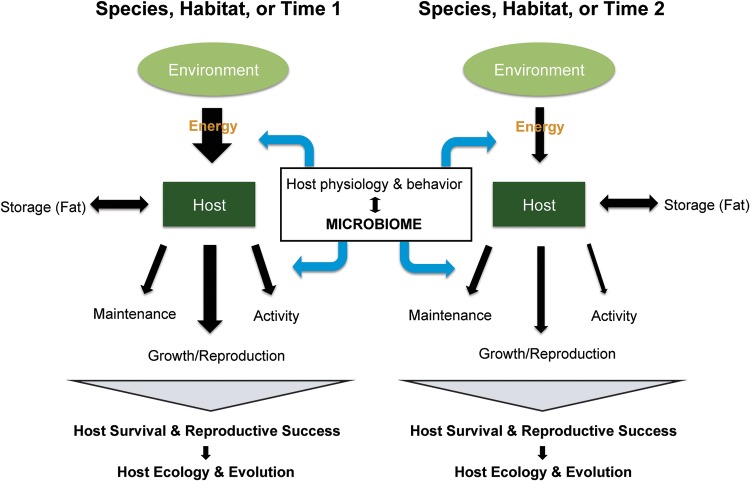FIG 1.
Life history theory dictates that hosts obtain a limited amount of energy from the environment (black arrows), which then must be allocated among the processes of maintenance, growth and reproduction, and activity. Energy can also be stored as fat to contribute to the overall energy budget at a later time. The overall energy budget and how it is allocated across processes can vary among host species and within host species across space and time, as depicted in these two cartoon examples. Traditionally, this variation has been described as a function of host physiological and behavioral traits. However, recent research implies that the microbiome can influence these dynamics as well through effects on host digestive efficiency and metabolic programming.

